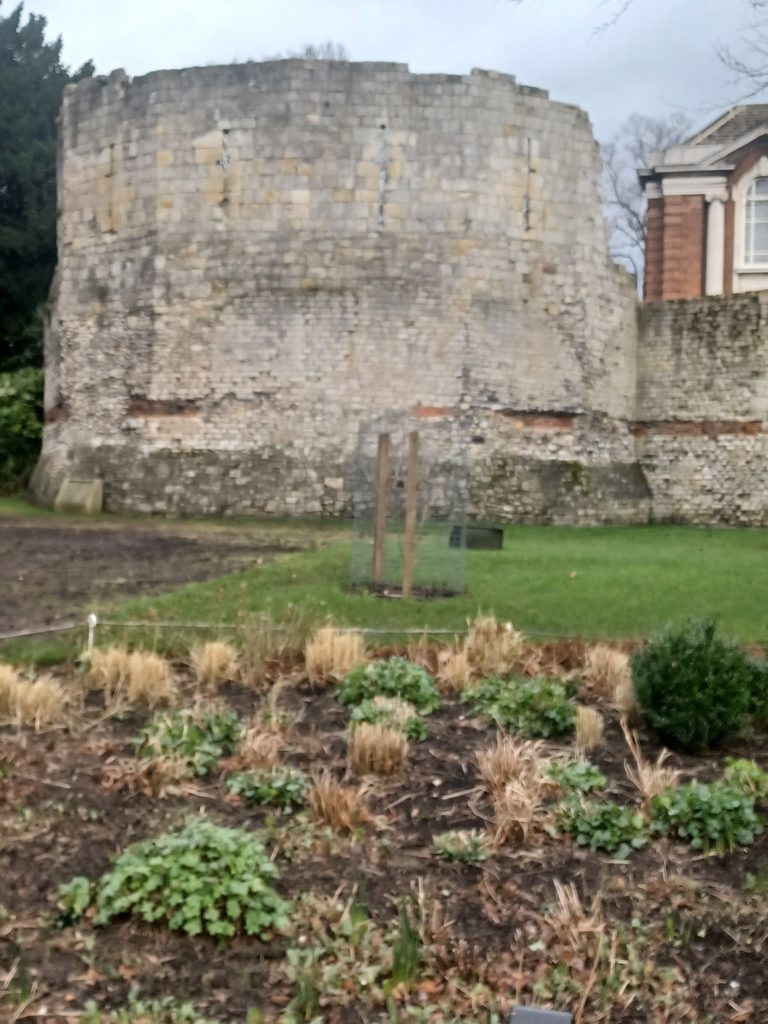
Today’s photo shows the part of the ‘Multangular Tower’ and a bit of the City’s public library, in the corner of the perimeter wall of the ruined St Mary’s Abbey, York. Yesterday took a trip to York on the A47 bus service, which along with the A46 and one or two others comprises a half-hourly service from Hull to York, diverting round Beverley, Market Weighton, Pocklington and Wilberfoss; this explaining that the journey takes two hours. Within the Abbey walls are the Museum Gardens (Yorkshire Museum since the 1830s), the Kings Manor complex of buildings, the ruins of St. Leonard’s medieval hospital, the ‘Hospitium’ building, the early ‘Observatory’, York City Library and Archive, The City Art Gallery, St Olave’s church, the building allocated to the York Philosophical Society and the original main gate entrance to the Abbey from Marygate.
There are a number of fine trees in the Museum Garden and a number of cultivated shrub and flower beds, all in immaculate condition. On entering the Gardens, having crossed Lendal Bridge over the River Ouse, to the right are the ruins of St. Leonard’s Hospital. In a surviving ceiled section I found an information board explaining that each of the herbacious beds had a different theme which dictated the planting there, one is shown above. Clearly February is not the best time of year to see these beds. There were other information boards nearby, but this section of the Gardens would probably not be explored by the average visitor so it is hoped that the garden one at least is more accessible in spring and summer.
Incidentally, a visit to the tiny cafe in ‘Barker’s Tower’ is recommended wedged against the opposite side of Lendal Bridge. of its two storeys the bottom one was once a dungeon, the upper the point from which a toll chain crossed the River to Lendal House. Interesting old walling and timber work inside. Nice stuff and interesting staff/owner. A bird’s-eye view of York in on display outside the York Philosophical Hq and shows the scene before Lendal Bridge was built in the 1860s with Barker’s Tower shown very clearly.
(To be continued)